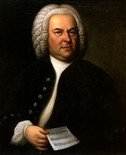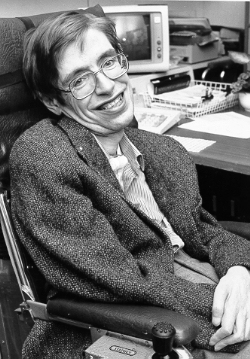This might seem like a subject of Science Fiction, but it encourages a lot of thought in matters both physical and philosophical. A recent paper in Scientific American discussed whether time travel is indeed feasible and why current physical and philosophical objections don’t preclude the possibility of time travel. I’ll attempt to describe how they deal with the objections here and explore the plausibility of time travel.
First, relativity allows for time travel into the future: as I mentioned in a previous missive, journey at a very high acceleration and you’ll return to earth years into the future, aging only slightly. This, of course, ignores the fact that we can’t travel at such high speeds as of now; this issue will be addressed later.

There is a paradox that occurs if we allow time travel into the past: to put it bluntly, could you go back into the past and prevent your parents from marrying, say by killing them? There is another paradox, called the “free lunch” paradox, that occurs: if you go back to Bach’s century and tell him how great he is in our century and show him all the great compositions he is famous for, and Bach then reproduces these compositions note for note, then Bach’s music exists without any “artistic” effort being put in to them (a “free lunch”, so to speak).
Why should these paradoxes rule out travel into the past? According to the authors of the article, they don’t violate any physical or philosophical principles. To explain this further, let’s think about the role that time plays. Space-time is a four-dimensional construct. A four-dimensional “worm”, whose ends represent the events of your birth and death, is what your life forms in space-time. An object, seen any instant, is a three-dimensional cross section of this worm. The line along which the object lies (ignoring its thickness) is that object’s worldline. At any point, the angle your worldline makes with the time axis is a measure of your speed.
Relativity requires that worldlines be timelike. Massive objects distort space-time and bend worldlines. Suppose space-time becomes so distorted so that some worldlines form closed loops. Such worldlines would be timelike all around. Locally, they would have all the properties of space and time, but yet they would be corridors of the past. Such a construct is called a closed timelike curve (CTC). By following a CTC, we could meet ourselves in the past, or if the loop were large enough, visit our ancestors.
CTCs can be created by distorting space time. But unlike a time machine, a CTC gets used up if repeatedly traversed since only a finite number of worldlines can fit into it. Thus if one travels on it to a particular event, one will meet everyone who has ever traveled, or will travel, to that event. We do not know the if the universe contains any CTCs, though there have been several calculations, including one by the German mathematician Kurt Gödel, that predict CTCs.
Let’s now go back to the parent paradox and see what principles of physics and philosophy it violates. Classical physics says that if you go back into the past, you must do exactly what history records you doing (i.e., you can’t kill your parents or cause their marriage to break up if history didn’t record such a thing). The philosophical objection to this, of course, is that it is a restriction of free will. But classical physics says that what you do right now is an inevitable consequence of what happened before you were even born! So this paradox poses no threat to free will than does classical physics itself.
The real problem with this paradox is that it violates the principle of autonomy which says that you can have any configuration of matter that laws of physics permit locally, without worrying about what it is like in the rest of the universe. Without CTCs, both classical and quantum physics follow this principle (though one could argue this isn’t really true given the results involving Bell’s Interconnectedness Theorem). However, the consistency principle says that the only configurations of matter that can exist are those that are self-consistent globally. In the presence of CTC, classical physics puts the two principles in conflict. But classical physics also says that there is only one history and whatever you do, consistency requires you to act your part out in the way it is dictated. So, if you goto the past, something will happen such that instead of killing your parents and altering the past, you become part of it (perhaps your attempt to kill them allows for them to first meet). Classical physics says something like this must happen, and that consistency requires the autonomy principle to fail. However, this is all moot because classical physics is by no means accurate, even though it is sometimes an excellent approximation to reality. But with CTCs, it is very false.

Stephen Hawking argues that quantum mechanical effects would either prevent CTCs from forming or destroy any would-be time traveler who approached one. This, the authors of the article claim, simply exposes a limitation of current technology and these effects, far from preventing time travel, will facilitate it.
Quantum mechanics deviates from classical physics in that instead of predicting with certainty the outcome of an observation, it predicts all possible outcomes and the probability of each. This, the authors claim, explains CTCs in a consistent way. Everett’s many universes interpretation of this “randomness”, which is very controversial though it prevails in some areas of study, says that if an event can physically happen with a certain probability, then it does—in some universe. Physical reality consists of a collection of universes, a multiverse, so to speak, that contains its own copy of the observation and its outcome. According to Everett, quantum theory predicts the subject probability of the outcome of the observation by prescribing the proportions of universes in which that outcome occurs.
So, if you believe Everett’s interpretation, the parent paradox isn’t a paradox anymore. In one universe, the one you are born in and decide to travel back in time and kill your parents, you don’t visit your parents. In the other universe, the one where you travel to, you are never born at all since you did kill your parents. Quantum physics’ multiverse interpretation conforms to both the autonomy and the consistency principle, even in the presence of CTCs. Similarly in the free lunch paradox: in one universe the compositions are actually composed by Bach and it is no longer a paradox.
The idea that time travel paradoxes can be resolved by multiple universes isn’t new, but it is reassuring to see that there’s some theoretical basis for making such assumptions. The authors have made computer simulations of these paradoxes and CTCs to calculate the behaviour of modified logical circuits. The time travellers used are “packets” of information. The claims made have been upheld by their simulation, according to them.
There is a final argument against time travel: if it is possible, why have we not been inundated by people from the future? This is because a CTC reaches as far back as it was created. So if the first CTC was created in 2099, then you can’t expect to see time travelers before then. Also, you can’t expect to be “inundated by people” since a CTC can only accommodate a few worldlines.
So the authors say that there’s nothing to prevent time travel, as long as the multiverse interpretation of quantum mechanics is true—and in quantum theory of computation and quantum cosmology, no viable alternative exists. But I think Hawking’s initial objection still holds: how does one come up with machines/instruments that will surpass quantum mechanical effects near these so-called CTCs? I think as far as human time travelers are concerned, it is a valid point.

But from a technological perspective, another interesting article appeared in Nature that implies that faster than light travel is possible. Hegerfeldt, from the University of Göttingen, has shown that there is a probability that atom B will notice the decay of another atom A, separated by a distance R, long before the interval R/c has elapsed (c is the speed of light). Does this imply that causality in the sense Einsteins’s relativity has broken down? Not really, since the problem that was tackled (originally by Fermi) is an unphysical one: atoms A and B are taken to be strictly independent of each other. Quantum mechanics says this cannot be the case. Other assumptions that Fermi made regarding the states of the two atoms are argued as being invalid as well. Hegerfeldt has shown that super-luminal signalling is possible for two completely independent systems of this nature. Once the algebra for these systems in a realistic perspective has been worked out, it would be interesting to see if the super-luminal signal is a more rapidly decreasing function (of the distance R) than is the causal signal, after an interval of R/c. That would be the general expectation, but time machine builders will have to wait and see if this expectation is shown false.
Finally, going back to one of the more profound quantum mechanical facts that arose in the latter half of the 20th century, does Bell’s interconnectness theorem with its non-local connections imply superluminal signalling? Alain Aspect’s experiments showing a strong correlation for the twin-state polarisation of photons violate Bell’s inequality, thus indicating that there is something connecting two twin state photons at a speed exceeding the velocity of light. Assuming we believe in such a connection, is it possible to exploit this superluminal connection so you can send signals from the present to the past? That remains to be seen, though there exists a proof that relies on the correctness of quantum theory that says this is not possible.
References
- Deutsche, D., and Lockwood, M. The quantum physics of time travel. Scientific American, March 1994.
- Herbert, Nick. Quantum Reality. 1985.
- Maddox, J. Time Machines still over horizon. Nature, February 1994.
Related articles






